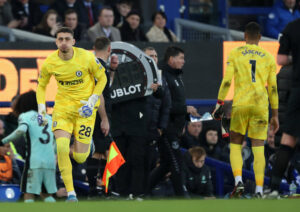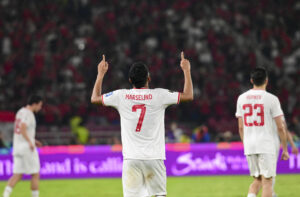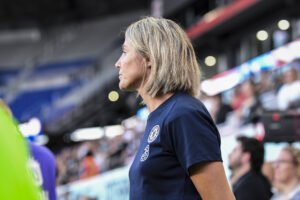Welcome to the latest instalment of the Last Word on Football’s series of articles looking at some of the most memorable grounds that are sadly no longer with us. These grounds will always have a special place in the hearts of a particular team’s supporters and fans of football alike.
In this edition, we look at the Baseball Ground; this was the home of Derby County for 102 years of their 136-year history.
The ground saw some great highs, some disappointing lows and many a memorable match during its time.
Never to Be Forgotten Football Grounds: The Baseball Ground
Before Football Came Baseball
The Baseball Ground opened in 1890 and originally hosted, yep you guessed it, baseball.
Built by Sir Francis Ley, owner of the foundry situated behind the Pop side, the ground was part of his venture to bring baseball to the UK.
Derby County Baseball Club were national champions in 1890 but their success soon tailed off and Derby County Football Club made the BBG their home in 1895.
The Rams moved from their Racecourse Ground home into the then Ley’s Baseball Ground.
Legend has it, upon permanently moving in, a group of gypsies were forced off the site and cursed the side; Derby lost three FA Cup finals in the next eight years.
The early days of Derby’s time at the BBG coincided with the playing career of the club’s record goalscorer, Steve Bloomer; he netted 332 goals in two stints for the Rams.
You Walk Into the Pop Side, You Hear a Mighty Roar
The Baseball Ground wasn’t widely known for its quality playing field but instead the atmosphere in the stands.
Described by one fan, as a ground where the “only place you could dribble was on the wings.
“The pitch was absolutely terrible, a mud bath….but Derby knew how to play on it.”
The close proximity between the terraces and the field made the BBG an intimidating ground for many to visit.
Not to mention the noise created by the stomping feet on the wooden boards of the stands whenever the Rams earned a corner or free-kick.
The floodlights lit up the surrounding narrow, cobbled streets whenever there was a midweek fixture.
The Pop side, the terraced lower-tier of the Ley Stand, was the place to be on all accounts, for the die-hard and most passionate of Rams fans.
Oh, and just in case the Baseball Ground wasn’t unique enough, it wasn’t rectangular either; the stadium’s baseball heritage meant that the stands didn’t line up with the pitch.
Memorable Matches
Putting three past the Portuguese giants of Benfica in the 1972/73 season was a game that provides fond memories for many a Rams fan.
Goals from John McGovern, Kevin Hector and Roy McFarland gave the Rams a great advantage going into the return fixture.
After being crowned league champions in the previous season, Cloughie’s side would brush aside Benfica and reach the European Cup semi-finals, only to lose out to Juventus in contentious fashion.
A few years later and the Rams would be winning the First Division yet again; this time Dave MacKay was at the helm.
Derby went nine matches unbeaten to snatch the 1974/75 title by just two points from Liverpool.
One of these games was a 5-0 drubbing of lowly Luton Town, with all five goals coming from striker Roger Davies.
The following season and another memorable European Cup night played out under the lights of the BBG.
Benfica were big, but they weren’t the Galacticos. Derby welcomed Real Madrid to town for the first leg of a second-round tie that they won 4-1.
A Charlie George hat-trick and a goal from defender David Nish won the Rams the match; the less that is said about the return leg the better.
The demolition of Finn Harps 12-0 in the UEFA Cup was another European classic; Hector netted five and there were two hat-tricks from Charlie George and Leighton James.
The Decline of the Baseball Ground
Following the tragedy that took place at Hillsborough in 1989, the Baseball Ground transitioned into an all-seater stadium.
By the mid-1990s the capacity had shrunk from just over 40,000 to around 18,000.
With Derby pushing to be a top division side, a move to a larger stadium was called for and the construction of Pride Park began in 1996.
Sunday, May 11, 1997 marked the end of first-team football at the Baseball Ground – the reserve side played there until it’s demolition in 2003.
Arsenal were the visitors on that spring day – an early Derby goal and a Tony Adams red card came before the North London side scored three second-half goals.
Fans streamed onto the pitch at the full-time whistle, grabbing handfuls of turf as pieces of history.
The call to clear the pitch for fireworks fell on deaf ears; this was the last chance Derby fans had to take in a place that was the scene to so many of the chapters in the club’s great history.
Main Photo






